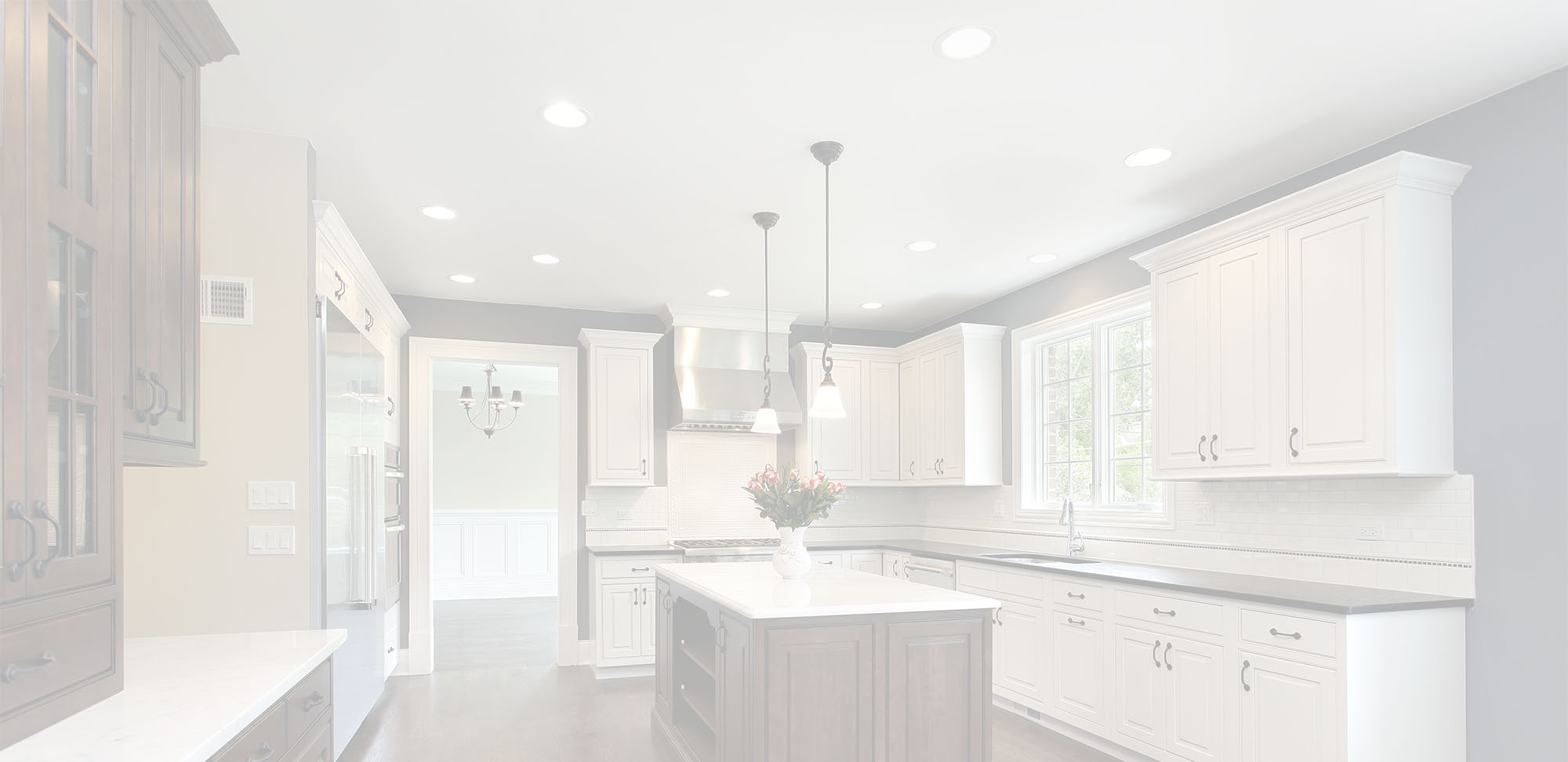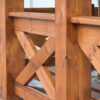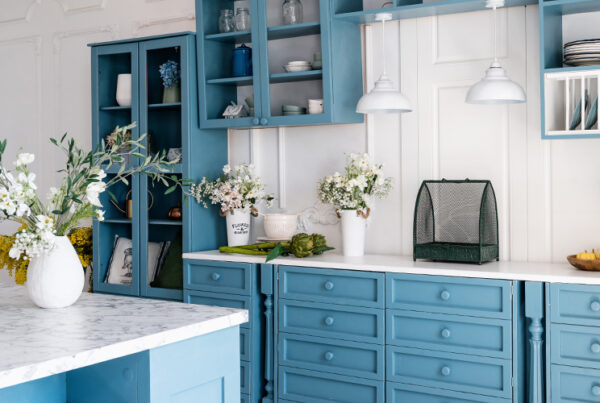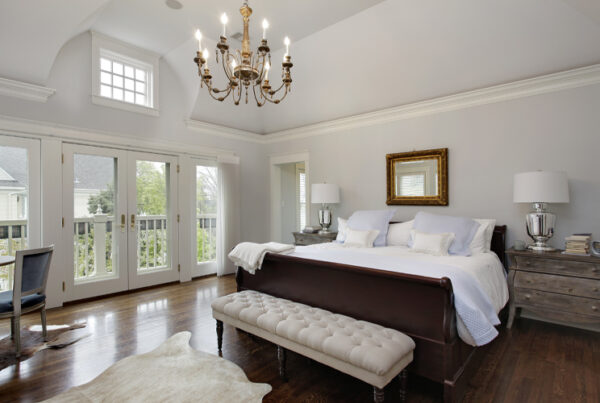
With the new year and exciting new year resolutions right around the corner, if self improvement is on your mind, why not for your home as well? A new interior paint job can completely change the vibe of your space, and with all the different color choices out there, you might also be wondering what ceiling color you should be painting with in 2022.
Picking the best color for your ceiling is incredibly important for giving your space character, and understanding how different ceiling colors work with your walls will help you determine the best ceiling color for your space.
White
No matter whose house you’ve been to, whether it was another family member’s or a neighbor’s, there’s a very high chance you’ve come across a ceiling painted in white. White has always been, and perhaps will always be a reliable choice for a ceiling color, and not without good reason. White goes with everything. It’s perhaps the most adaptable of all the colors and fits right in with anything from calming sage green walls to eclectic gold striped ones. Not to mention, painting a ceiling in white can magically open up and enlarge a space. Keep in mind that there are many different shades of white to consider. Try experimenting with different shades paired with different finishes to find your perfect white, and if all else fails, don’t be afraid to consult with a professional interior painter.
Beige
You might be wondering: should you paint your ceiling color the same color as your walls? It’s tempting to go with the safest choice, white walls and a white ceiling, and let’s face it, white on white is the most forgiving when it comes to designing your interiors. But if you’re bored with the idea of white for a ceiling color, why not try beige? Not only is it easy on the eyes, it can pair well with most earth tones, as well as existing architecture from older homes. Beige and white is also a natural pairing if you’re hoping to get the best of both worlds – a beige ceiling with beige walls and white doors, white furniture, and a few natural art pieces elements like some driftwood or even a bowl of pine cones can create the peaceful illusion of being close to nature.

Brown
While not as common as white or beige, interior designers all across the nation have been quite successful with using brown as a ceiling color. You might be thinking brown is an odd choice, but there are many shades of brown from lighter browns with gray undertones to pale browns that invoke nature. It’s definitely the bolder choice, but if done right, stands to make your interior warm, cozy, and very inviting. You’re guests will be very impressed with the unexpected pleasantness of your ceiling color choice.
Green
When deciding on a ceiling color, your first choice might not be green, however green seems to be the new hot color on the scene. Muted shades of green began gaining popularity in recent years because of its calming effect and endless adaptability. Greens work well with existing architecture, like wooden beams stretching across the ceiling, by accentuating existing earthy tones. Don’t be afraid to step outside your comfort zone by using the color green for your ceilings – you might be surprised at how versatile a color it is when used in combination with other natural tones.
Yellow
You’ll find yellow ceilings in more traditional style homes. Yellow goes well with country style homes, invoking a sense of sunlight and luminosity. It’s a bright and cheery choice if you plan to have friends over for coffee or tea, and is pretty versatile and generous when it comes to being paired with different styles of furniture. If you’re a fan of idyllic, charming, and rustic interiors yellow is a fantastic ceiling color choice.

Gray
If you want to cool things down, gray is a good way to go for a ceiling color. Not only is it easy on the eyes, it also does a great job of accentuating any lines and textures that are a part of your existing ceiling design. Try going for paler, muted tones of gray to control the sense of temperature in the room. Gray also works well for rooms with south-facing windows.
Wallpaper
Using wallpaper is a fun, exciting way to decorate your ceiling, if you’re at a loss with what paint color to use. The options for wallpaper design are endless and can really bring a room to life. A popular choice by many interior designers are floral designs that bring forth the visual of nature through the graphics that work harmoniously with other natural tones in the room. It’s also a great way to impress your guests because of its fun and edgy unexpectedness.
Some Things To Keep In Mind When Choosing A Ceiling Color
Now that you’ve gotten some ideas (and if not, check out our residential portfolio for inspiration!) about what ceiling colors to choose, here are two things to keep in mind that will help ensure your chosen color is doing what you want it to for your chosen space.
For Primary Living Areas: White or Lighter Colors Work Best
Primary living areas like your living room and kitchen tend to have larger ceiling spaces. Therefore, darker colors run the risk of overpowering the space. It’s recommended you stick with white or lighter colors for your primary living areas to keep them feeling open and welcoming. Not only this, white pairs well with any wall color you may choose.
For A Sophisticated Look: Go Darker
Go darker if you’re looking to make a room feel more intimate. Darker colors tend to make a ceiling feel lower, and for specific spaces lower works better. Guest rooms and offices are spaces where minimal people gather, but also where those who do spend a bit of time, whether it’s for work or leisure. This makes them great for experimenting with darker colors to give them a more intimate and sophisticated feel. If you do choose to go darker, pick a color two or three shades darker than the wall color. Also, don’t be afraid to explore how darker ceiling colors can contrast with crown molding.
For a More Classic Look: Paint Your Ceiling Lighter Than Your Walls
If you’re looking for more of a classic look, a ceiling with a lighter color than your wall color is the way to go. The reason why most people go for this look is simple: it works in any space, and it makes choosing a ceiling color for a space much easier. When in doubt, go with the classic look.












